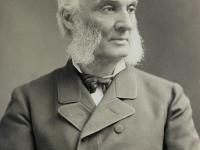Answer: The Lombard Street Riots
The "Lombard Street riots," as they would come to be known, began on August 1, 1842, when more than 1,000 members of the black Young Men's Vigilant Association took part in a temperance parade to commemorate the eighth anniversary of the abolition of slavery in the West Indies. They were attacked on Fourth Street by an Irish mob that beat many of the marchers and looted black homes in the area. The marchers retaliated in self-defense, further enraging the Irish mob. The rioting continued for three days.
During the riots of 1842, the mob burned down the Second African Presbyterian Church and Smith's Hall on Lombard Street, which had been the site of abolition lectures since abolitionist hub Pennsylvania Hall was destroyed in the riots of 1838. The Irish rioters headed west toward the home of prominent and outspoken African American leader Robert Purvis. Purvis sat on the steps of his home armed and ready. Ultimately, his home was spared from the inferno by the intervention of a Catholic priest.
Philadelphia has a long history of conflict, and very often people have taken to the streets to express feelings of support, anger, and triumph. HSP's library contains a number of books and pamphlets covering riots that have occurred in the city from the 1700s to present times.

